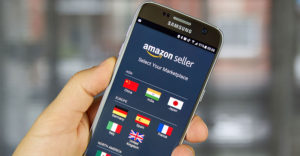Amazon is on the brink of a possible breakup, and marketers should be ready to seize the opportunity.
It’s difficult to imagine life without Amazon — as we know it. An astonishing 63 percent of consumers start their online shopping search on Amazon and the online retailer is expected to seize 50 percent of the entire e-commerce market during 2021.
But with a new administration in the White House and ongoing antitrust probes by Congress, there’s a real possibility that Amazon’s e-commerce dominance may soon end.
Let’s examine what a breakup of Amazon could look like — and why it’s likely a win for brand marketers.
Why Do Lawmakers Want To Breakup Amazon?
Amazon’s retail model is unique. They’re a direct retailer, a third-party marketplace, and a logistics company — all in one. Therein lies the problem. Lawmakers want to know whether Amazon is slanting its marketplace to its advantage and creating an unlevel playing field for third-party sellers. Evidence is strong that it is.
First, let’s consider a key focus of congressional enquiry — Amazon’s exploitation of the data it collects about its marketplace sellers. Last year, The Wall Street Journal reported that Amazon used data from these sellers to develop competing products under its own brand. Amazon’s knock-off version of Allbirds’ sneakers is a notorious example.
Amazon also uses data insights to ensure its brands are front and center — labeling them as “Best Sellers.” For instance, if a consumer searches “stapler,” Amazon lists its own Amazon Basics product as a top result, often above all other brands that are not sponsored (paid-for) listings.
These anticompetitive practices are just the tip of the iceberg. Another tool in Amazon’s toolbox under federal scrutiny is the Buy Box. This is the widget on product listing pages that allows buyers to make a quick purchase without considering whether they’re buying from Amazon or a third-party seller.
This innocuous box is fiercely competitive, and Amazon plays to win. How? When you search for a product on Amazon, chances are there are many third-party sellers who offer that product at the same price. To ensure a fair chance at a sale, Amazon’s algorithms pit competing brands on a rotating basis, weighing price and performance metrics. For example, a top-ranking seller of Lysol Disinfectant Wipes might hold the Buy Box for 65 percent of the day while a lower-ranking seller holds it for the remaining 35 percent.
But that parity disappears when Amazon sells its own products in competition with other sellers. In these scenarios, Amazon adjusts its algorithm to give itself preferential treatment on the Buy Box, thereby winning 100 percent of the sales.
Third-Party Brands ‘Bullied’
These anticompetitive practices persist because Amazon is both the rule maker and judge of all that happens on its platform.
To maintain its monopoly Amazon can change policies, control what it deems “essential” products and prioritize them for shipment. It can even suspend third-party seller accounts for months without warning or explanation.
A 2020 report issued by the House Judiciary Subcommittee on Antitrust referred to these and other practices as tantamount to “bullying” third-party sellers. Lawmakers also concur that Amazon’s role as a direct retailer and operator of a third-party seller marketplace “creates an inherent conflict of interest.”
Many of these sellers are small or growing brands who must find ways to win on Amazon or leave. Others turn to advocacy. Trade groups representing small businesses recently formed a national coalition to campaign for stricter antitrust laws.
How Breaking Up Amazon Might Work
If the big Amazon breakup does happen, what could it look like?
The most likely scenario, as recommended by Congress, is that Amazon will be divided into three companies. Importantly, this will see Amazon’s core products (Kindle, Alexa and subscription services) and e-commerce site split from its third-party marketplace.
Also on the chopping block is the highly profitable Amazon Web Services (AWS) business, which props up the company’s low margin retail business. AWS is under scrutiny because it provides cloud infrastructure services to many of Amazon’s competitors, a conflict of interest that lawmakers are concerned Amazon could exploit.
A Win for Brands and Consumers
Even in the event of a breakup, Amazon as an online shopping mecca isn’t going anywhere — and any changes will likely be relatively unnoticeable to consumers. For instance, in the event of a breakup, Amazon-branded products and third-party products will likely still be available on Amazon.com with the same promise of convenience.
But, if a breakup occurs, Amazon will become like any third-party seller. It’s ability to win 100 percent of the Buy Box or dominate search results will diminish. Antirust controls will also limit its ability to exploit its access to competing sellers’ data.
This leveling of the playing field is a hugely positive event for brand marketers and sellers who’ve struggled to win the Buy Box or felt squeezed out by Amazon’s algorithms and business practices. Without that dominance, Amazon’s share of direct sales could decline more than 50 percent, but third-party sales will skyrocket.
Furthermore, as Amazon moves away from its current anticompetitive practice of subsidizing negative margin products, we can also expect Amazon to refocus on its proprietary products — Alexa, Kindle, and private-label items — creating further opportunity for brands to compete for retail business.
This is a huge deal, particularly for small brands who, in their quest to reach online consumers, struggle to find a viable alternative to Amazon. Breakup legislation is the only way to give them a fair chance to compete and grow without worrying about anticompetitive conduct.
What’s Next?
It’s hard to predict what comes next. Opposing opinion suggests that an Amazon breakup would be anti-American, anti-free market, and an overstep by big government. But as the debate around Amazon and fairness gathers steam, marketers should prepare now for the opportunity it will surely unleash.

















































Social Media
See all Social Media